Find out what the propagation and garden teams have been up to this week.
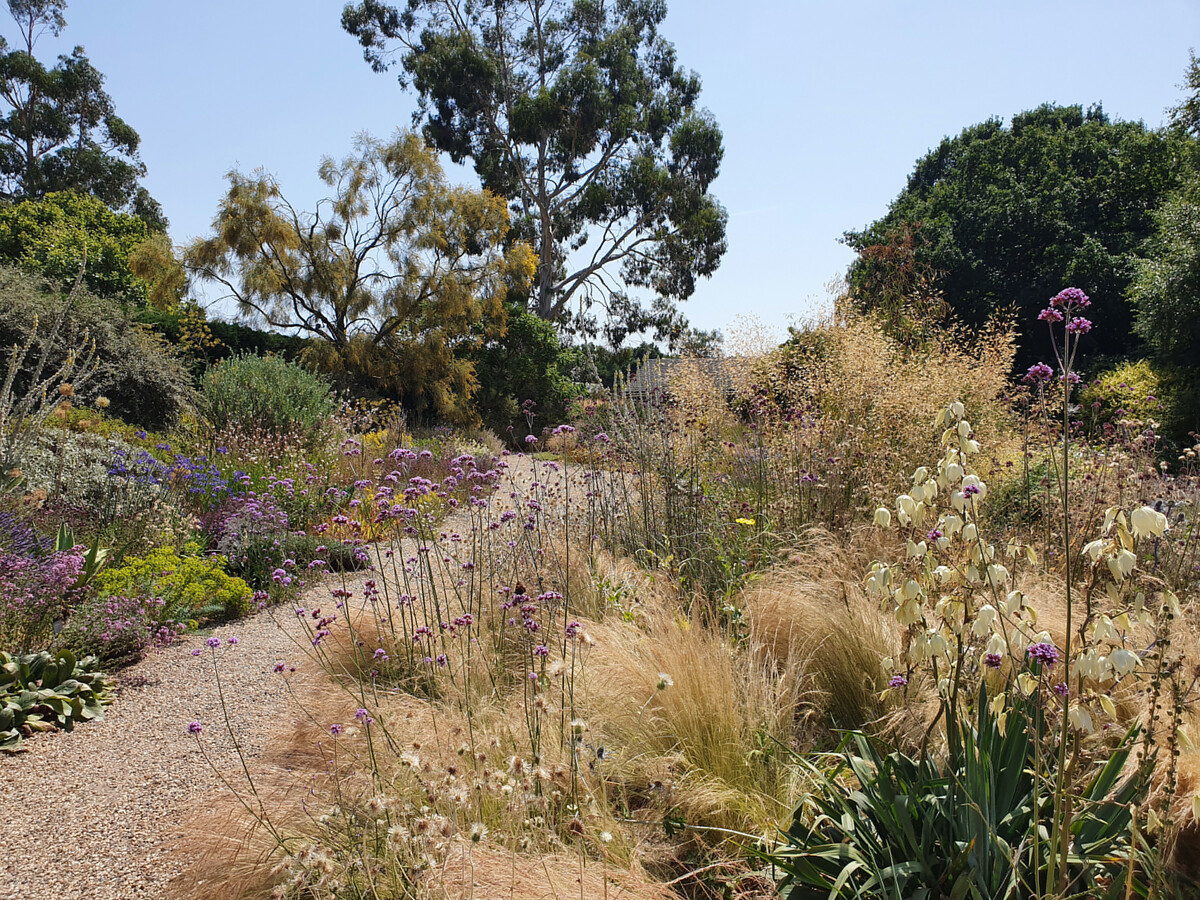
Top 12 drought-resistant plants
Top 12 drought-resistant plants
Beth planted her Gravel Garden 30 years ago as an experiment to see which plants would be able to survive in full sun, the poorest of soils and without irrigation. Our annual rainfall in this dry part of the country is around 500mm, and as experienced across the country this summer, we also face long periods without any rainfall.
Drought-resistant plants originate from regions with low rainfall and hot summers, such as the Mediterranean. To survive these extreme conditions, plants have evolved features to help minimise water loss and reflect sunlight away from leaves. These adaptations include:
- Small leaves- e.g, thymus- reducing the surface area from which water loss can occur through transpiration.
- Leaf hairs- e.g, balotta- to deflect light, to trap moisture and to help reduce air movement around the leaf, limiting the transpiration rate.
- Waxy coating- e.g, hylotelephium- helps to keep water in the leaves and reduce transpiration.
- Silvery colour- e.g, stachys- reflects strong sunlight.
Here are some of our reliably, drought-resistant plants, naturally adapted to cope in extreme conditions:
Agapanthus- (African lily)- a South African perennial with large heads of trumpet-shaped flowers held high above thick, strappy leaves. Plants can be deadheaded when flowering has finished or left for the architectural seedheads. In autumn, foliage will begin to yellow and die back, so can be cut to the ground.
Agapanthus
Ballota- (False dittany)- a woody-based plant perfect for the impoverished soil of a gravel garden. Dry conditions ensure they remain compact and upright. The long, curving stems carry small, rounded woolly leaves with a blue-grey colouring. Leggy growth can be cut back after flowering to a few buds (like when pruning lavender, avoid cutting down into the woody growth as they won’t regrow). This evergreen sub-shrub adds interest all year round.
Ballota
Helianthemum- (Rock rose)- a low growing, evergreen, spreading shrub which produces masses of flowers from May through to July. After flowering, plants can be trimmed to remove spent flowers and to keep the plant tidy.
Helianthemum
Hylotelephium- (syn Sedum)- first, fleshy leaves are produced followed by waxy heads of unopened flowers. In late summer, the flowers open in colours ranging from white to deep purple. Plants benefit from the ‘Chelsea Chop’ (watch our video here), to prevent the plants becoming leggy and flopping under the weight of the large flower heads later in the season. Seedheads can be left to stand all winter adding interest to the garden. In late winter/early spring, the spent material can be cut down to make way for the new growth emerging from the crown.
Hylotelephium
Iris- (Bearded iris)- bearing sword-like foliage and showy flowers in a huge range of colours. Rhizomes like to be baked in the sun, so plant facing the sun with the fan of foliage sitting behind so as not to cast a shadow. After flowering has finished, remove the flower spike to avoid wind rock which could potentially uproot the rhizome. Untidy foliage, which has naturally yellowed over the summer and autumn, can be pulled or trimmed back. Rhizomes may need to be split after a couple of years due to congestion which will affect flowering. (Stockman Marc shows us how to divide and care for bearded irises here).
Iris
Nepeta (Catmint)- a much-loved perennial which is easy to grow, loved by pollinators and a beautiful addition to the garden. In early summer, plants produce an abundance of mostly lavender-blue flowers held above grey-green foliage. After flowering has finished, plants can be cut back down to the ground to neaten them up and to encourage a second flush of foliage and flowers. Read more about nepeta here.
Nepeta
Salvia ‘Blue Spire’- (syn Perovskia)- tall, slender, white stems carry small grey leaves with lavender-blue flowers held above. An attractive addition to late summer planting when plants like lavender and nepeta offering similar coloured flowers have finished their display. Plants eventually form a shrubby, woody base. In spring, plants can be cut back to this woody framework to a couple of buds to help keep the plant sturdy and compact.
Salvia 'Blue Spire'
Santolina- (Cotton lavender)- forms mounds of grey-green, evergreen feathery foliage. Button-like, yellow flowers are produced in July and August. Trim plants back after flowering has finished to prevent them becoming leggy. A cut back in spring will also help to keep plants compact.
Santolina
Stachys- (Lamb’s ear)- an invaluable ground cover plant which will gently spread and act as a foil for other sun-loving, drought-resistant plants. Its soft, woolly, evergreen leaves add interest all year round but will benefit from a tidy up going into spring to remove any winter damaged leaves. Tall, erect, woolly spikes of tiny pink flowers are produced from June to September. To keep plants tidy, remove spent flower stems and damaged leaves.
Stachys
Stipa tenuissima- (Mexican feather grass)- appears throughout the Gravel Garden producing delicate plumes of fine foliage which float on the slightest breeze. As the summer progresses, the foliage and seedheads turn golden brown. Plants remain intact over the winter months looking fantastic when touched by frost. In late winter, we cut the plants down hard to encourage fresh, new foliage. Alternatively, plants can be combed through with your hands to remove any thatch that has collected in the foliage.
Stipa tenuissima
Thymus- (Thyme)- a low growing, ground cover, forming mats of scented foliage. In early summer, plants produce a mass of flowers usually pink/purple in colour and loved by bees. When flowering has finished, cut off the spent flowers to encourage a second flush which will last into August.
Verbena bonarensis- (Argentinian vervain)- tall, slender stems carry clusters of tightly packed, lavender-purple flowers lasting from July to September. The small flowers are highly attractive to bees and butterflies. Despite their height, the sparsely leaved, wiry stems create an airy, almost see-through effect, perfect at the front of a border. As plants begin to collapse in autumn and winter, we cut them down to about 30cm to offer the crown some protection over the coldest months. Then come early spring, we cut the remainder of last years stems to the ground ready for the new growth.
Verbena bonariensis
To purchase our drought resistant plant collection, click HERE.
Written by Leanne Crozier

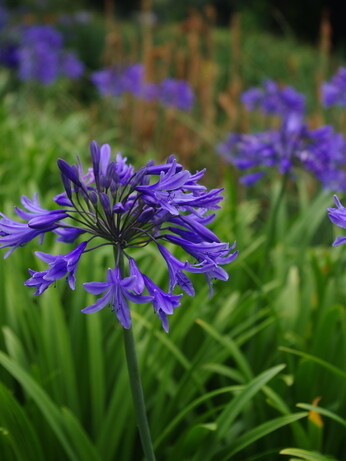
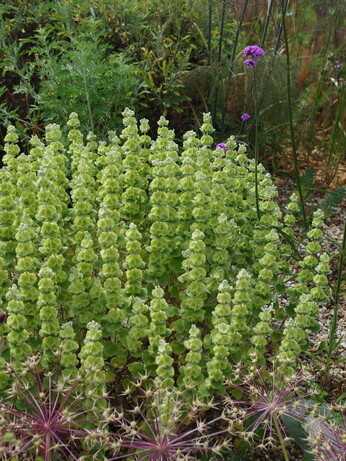
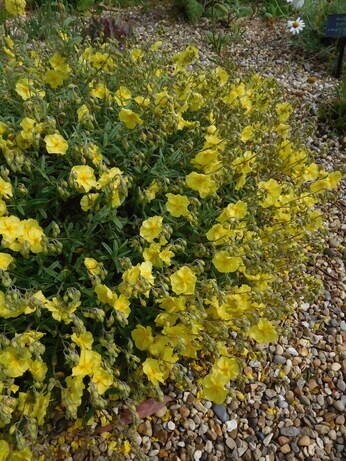
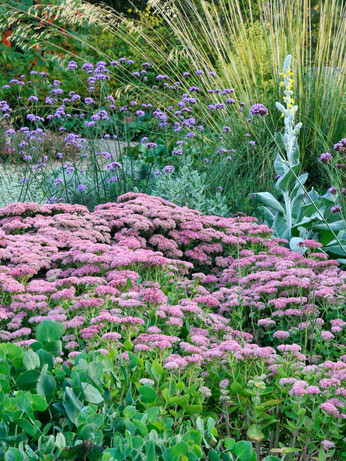
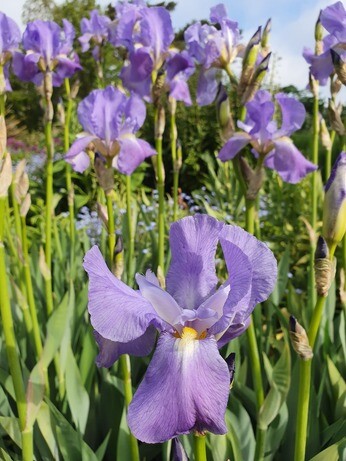
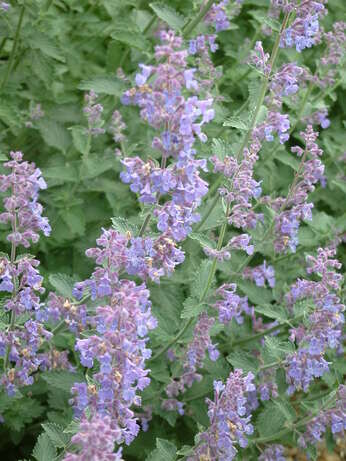
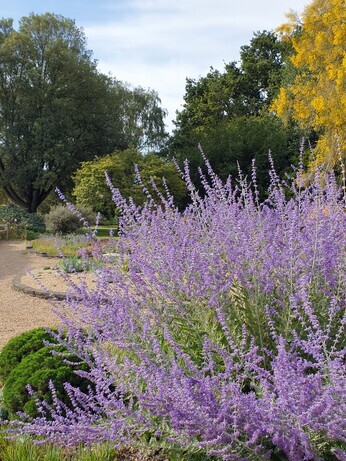
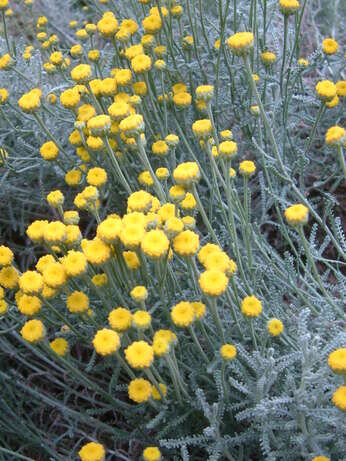
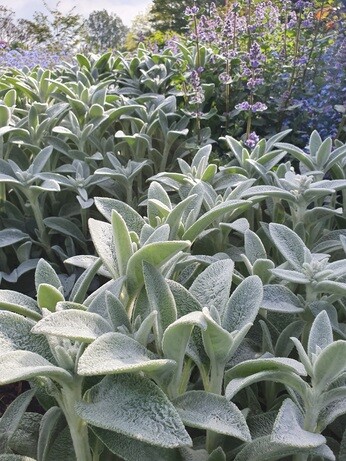
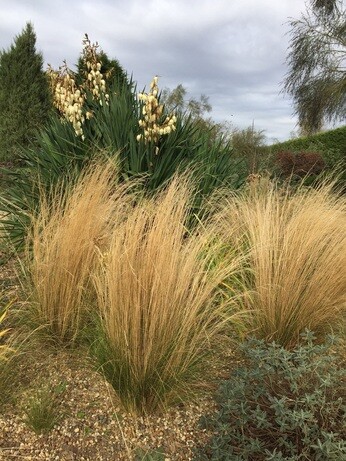
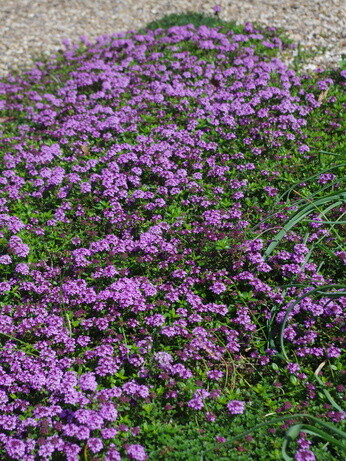
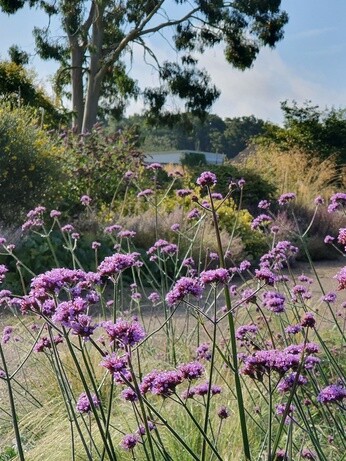
Our wildlife expert Dr Chris Gibson says, 'We need to unlearn the misconception that to attract wildlife it must be native species only.'
Head Gardener Asa adds, 'Non-native species can provide a rich diversity in habitats, and gardens with a succession of flowers throughout the year offering nectar and food resources when our native species may have finished flowering.'
I hope this helps to address your concerns.
All the best
The Beth Chatto Gardens